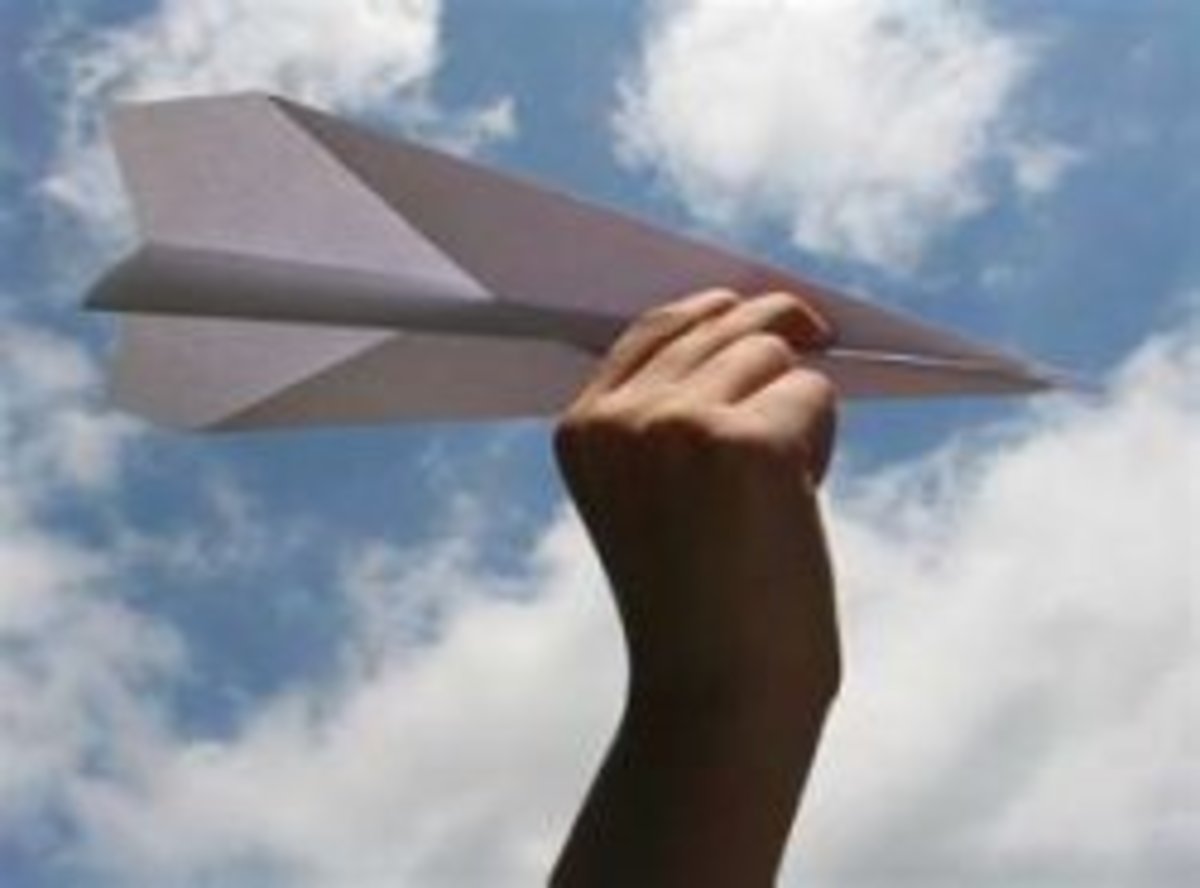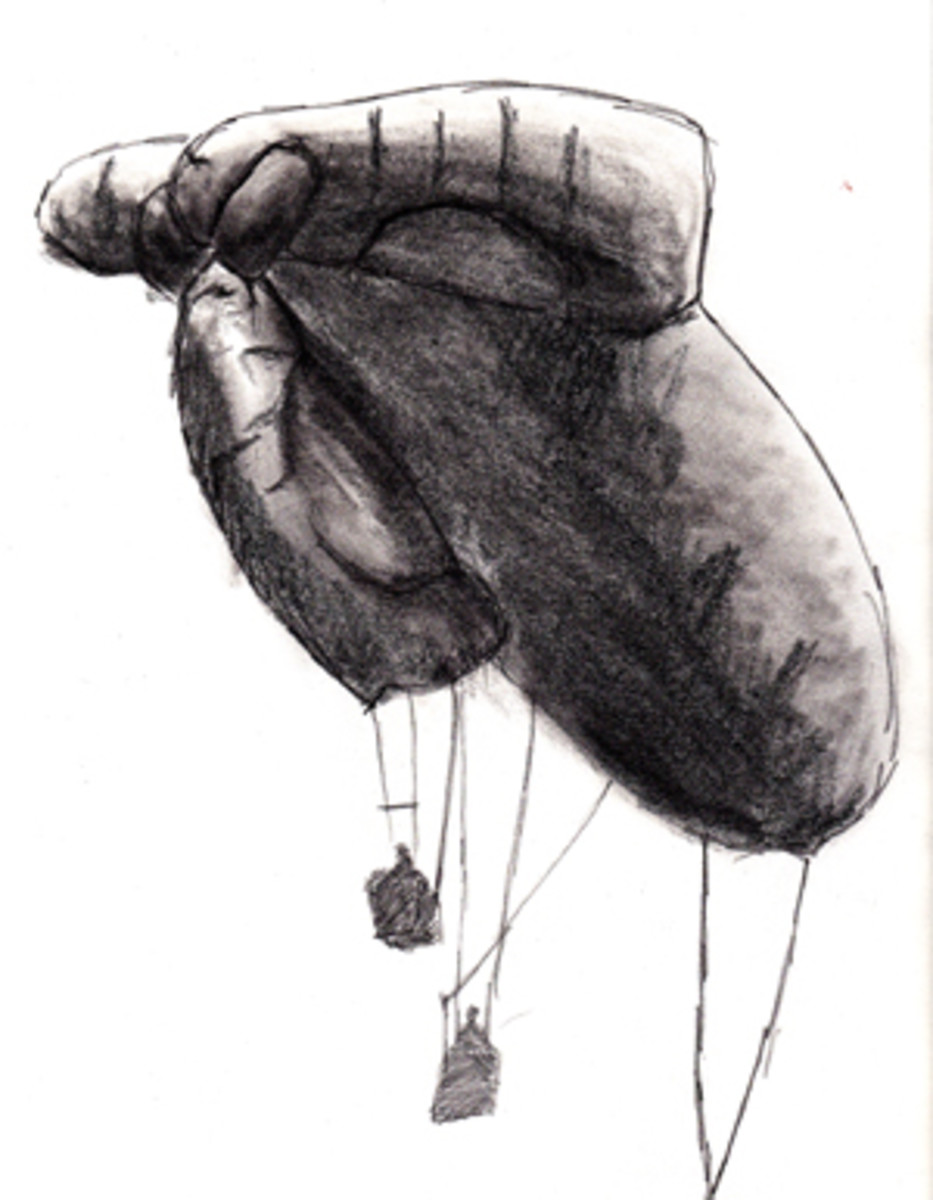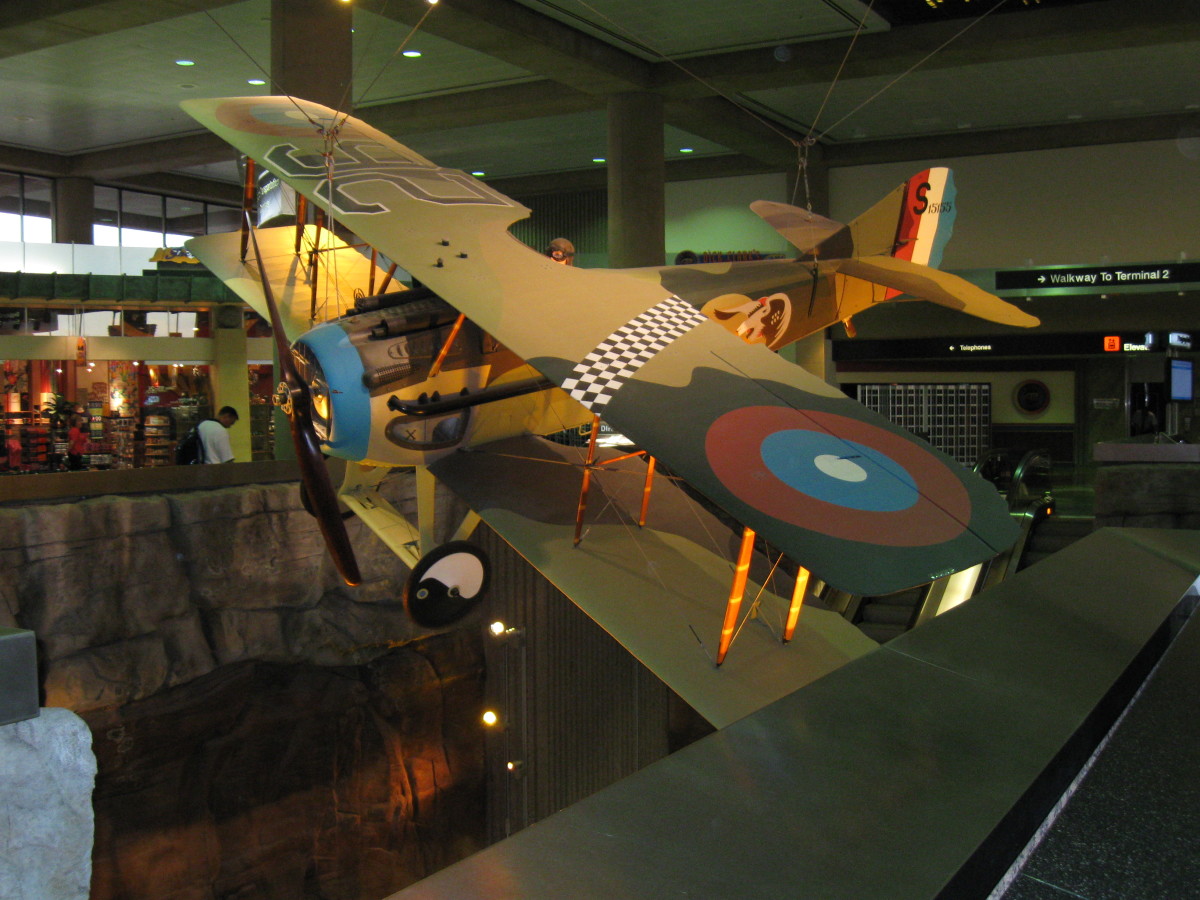Airplane Lift – Aircraft Lift – How Airplanes Fly – and How Aircraft Takes Off the Ground
Aircraft
An aircraft is any vehicle which flies by being supported by the air in the atmosphere. The force of gravity pulling the aircraft downward is countered by either a static lift, dynamic lift or by downward thrust.
Weather Balloon
A balloon filled with air will float in air. A good example is a weather balloon which we were shown by a meteorologist when we visited the meteorological station when we were young boys and girls in school. A weather balloon will bouncy in air and fly upward for thousands of metres in the atmosphere. A weather balloon is made of flexible latex material that will easily stretch.
How the Weather Balloon Produces It Own Lift
The weather balloon will by itself produces it own lift. How? A weather balloon is usually made of a highly flexible latex material. A light gas like hydrogen is put in the balloon. Since hydrogen is lighter than air the balloon will float in the air. At the ground level, the pressure inside the balloon and the atmospheric pressure outside the balloon are at equilibrium. When the balloon rises higher, the atmospheric pressure reduces. Because of the reduced pressure outside the balloon, the balloon will expand outward as pressure inside seeks equilibrium with the atmospheric pressure outside the balloon. When that happens, the volume of the balloon increases and the balloon floats further upwards until a point is reached where the expansion of the balloon will stretch the highly flexible latex to break. The balloon will then fall down. A weather balloon is used for carrying auto radio sensors that records weather parameters of wind speed, wind direction, temperature, pressure and humidity in the upper atmosphere.
Young Boys and Girls
When we were young boys and girls we used to wonder how airplanes fly or get off the ground. We used to think it was just a simple thing just as we would fly the kite or the balloon. The truth is, this is a science that requires one’s to learn a lot of mathematics, physics and chemistry.
How an Airplane Lifts
To learn the dynamics of how an airplane lifts one need to consider the following three forces that are acting against the lifting force of an aircraft:
1. Thrust – horizontal driving force from the engines
2. Drag – horizontal resistance force from the wind and air
3. Weight of aircraft – vertical gravitational force on the weight of the aircraft
How Do You Build A Lifting Force In An Airplane?
To make the airplane fly higher, one need to increase the lifting force. How do you build a lifting force in an airplane? To build a lifting force in an aircraft, all you need is create a lower pressure above the aircraft and a higher pressure below the aircraft. As soon as there is pressure difference between the top and the bottom, the aircraft will lift up to displace that area with lower pressure.
How Do You Create The Pressure Difference?
How do you create the pressure difference? An airplane has wings designed and curved in such a way that the surface area of the top of the wings is greater than the surface area of the wings’ bottom. When you apply thrust using the engines for the plane to move forward, the wings will cut into the air and the air will move backward at a speed equal to the speed of the aircraft. But the upper surface area (long path) of the wings is greater than the lower surface area (short path) of the wings. This means that the air on the upper side of the wing will travel at a faster speed than the air travelling below the wing. This difference in speed will create a pressure differential at the top of the wings. As the faster air above the wing leaves the wing, the wing is shaped in such a way that this faster air is deflected downward (downwash) to hit the slow moving air below the wings at a force. For every action, there is an equal and opposite reaction. This means the air below will respond with an equal and opposite force to the upward direction. This force coupled with the fact that the air with a higher pressure below will want to displace the air with the lower pressure (partial vacuum) above the plane will be displaced upward in the process. This is what provides the lift that keeps the airplane afloat.
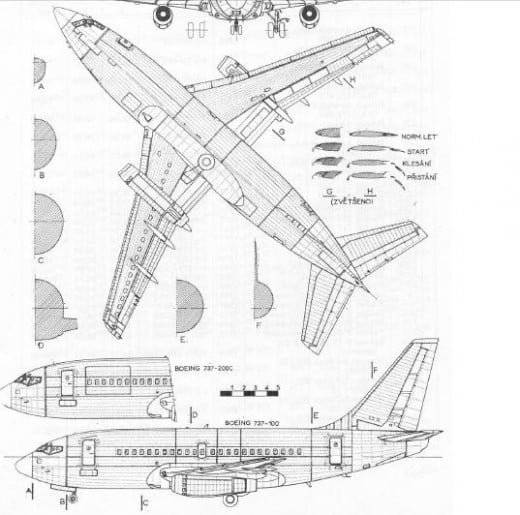
Large Airplanes
Whilst this thrust to the upside may be sufficient for light aircraft which have less weight and can achieve higher speeds in proportion to their sizes and weights, this thrust may not be enough to lift large airplanes in proportion to their sizes and weights. For those large airplanes, their engines have an additional task of sucking air from above where partial vacuum is created and simultaneously compressing the same air where it is released at a higher pressure from below. By factoring all these factors, you in essence create sufficient pressure differential between the upper and bottom parts of an airplane. This pressure differential is all a pilot need to regulate with a button for the airplane to lift higher or lower.
In summary we can therefore say that an airplane is lifted up by air only after the plane has pressed the air downward. Air has to be deflected downward continuously in order for the resting air to be waked up as it resists the downward push and in return it press the airplane upward.
Angle of Attack
When the wings cut into the incoming air, they do so at an angle. The angle at which the wing cut into the incoming air is called the angle of attack. This angle of attack will determine the amount of air sliced out by the wings. This angle of attack will therefore control the lift since it’s the one that determines the amount of air sliced out. The angle of attack is used in calculation a constant called the coefficient of lift for that angle of attack. The bigger the angle of attack used, the bigger the coefficient of lift. The maximum lift coefficient occurs after the angle of attack reaches what is called the stall angle of the airfoil. In summary we say that different angles of attack have different lift coefficients.
Calculating Force of Lift
The aerodynamic mathematics used in calculating how an airplane lift is complex and beyond the scope of this article. But we shall just pick on the final formula for calculating force of lift as follows:
Force of Lift = k (A dV²)/2
Where
k = Lift coefficient with no dimensions/units and dependents on angle of attack
A = area of wing in meters square
d = density of air in kilograms per cubic meter
V = speed of airplane in meters per second
Safe Take Off
What does that formula tells you? A pilot has to do some careful calculations for a safe lift off. He will consider the following:
- The lift coefficient
The lift coefficient is the same as considering the angle of attack. This will result in the following:
- The greater the angle of attack, the greater the drag your plane will produce.
- The greater the angle of attack, the greater the lift
- The greater the drag the more power is required
- The more power required, the more stressful to the engines and the more dangerous and uneconomical it is to lift the plane
- Area of the Wing
With a bigger area of the wings, the more lift can be generated. The area of the wings is actually one of the capabilities of the plane. It has to be factored in the calculations in determining how much load the plane can carry.
- Density Of The Air
- The higher the density of the air the greater the lift
- The higher the air temperature, the lower the density of the air and less lift
- The higher the atmospheric pressure, the higher the density and more lift
- Speed of Airplane
- The higher the speed, the greater the lift
- The stronger the engines, the higher the speed
- The stronger the opposing wind, the less the speed
- The stronger the assisting winds, the more the speed
- The longer the runway, the higher the speed can be achieved
- Other Factors To Consider In Safe Take Off
- Ability to see. Low visibility from fog, mist, low level clouds, volcanic ash/glasses, etc should be avoided.
- Poor weather - lightening and thunderstorms should be avoided.
Flaps, Slats and Stabilizers
The wings have movable parts called flaps. Flaps can be extended rearwards and downwards to manipulate the shape of the wings thus controlling the amount of air for the lift. Another type of flaps is the slats which functions just like flaps but the difference is that they are at the front of the wings instead of the rear. At the tail of the plane are the stabilizers which are also flaps and are used for managing the direction of the airplane.
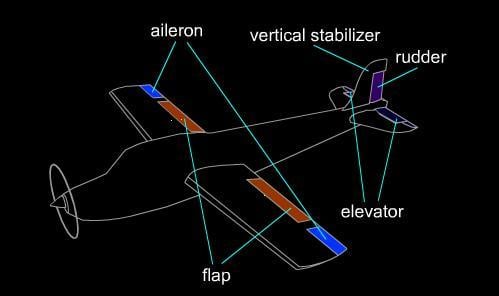
How Does The Pilot Tell How High The Airplane Is From The Ground?
And then eventually your plane will lift up. Then the question you will ask yourself is: how high is your airplane from the ground? A pilot can tell how high the plane is by use of a science called altimetry. The instrument used to measure altitude in an aircraft is called altimeter. What the altimeter measures is the atmospheric pressure at the height the airplane is. These pressure readings are then converted into height above mean sea level in feet.
The Higher You Go the Lower the Pressure Becomes
In lower school we learnt that the higher you go the cooler it becomes. We also learnt that the higher you go the lower the pressure becomes. What the altimeter reads is converted into height above mean sea level in feet, but what the pilot need is height above ground level to avoid hitting the ground, mountains, hills, buildings and vegetations. How does the pilot get the height above the ground level? He gets in touch (by radio, telex) with the traffic controller who gives him the pressure at the ground level. With the pressure (read height) at the ground level and with the height of the plane above sea level, the difference between the two readings will give the pilot the height the plane is above the ground level. Since pressure will change from place to place, the pilot will keep on getting the pressure readings from the corresponding flight control areas and these readings are used to adjust the altimeter accordingly.
Geography, Topography and Universal Coded Language
A pilot will also need to know some geography and topography so that when he gets closer to a mountain, say mountain Everest, he can make some adjustment to the aircraft’s height to avoid hitting that mountain, or better still, to avoid it altogether. The pilot will also need to have learnt a universal coded language so that when he goes to London he can communicate with the traffic control there just the same way he can communicate with traffic control when he is in China, Russia or upper Mongolia.
Get Health, Cleaner Teeth and Gums
Remove Debris and Bacteria Lodged Deep between Teeth and Below the Gum-line
If you have liked this article, and you would want this page to keep up and improved, you can help by purchasing some great items from Amazon by following Amazon links and widgets on this page. A free way to help would be to link back to this webpage from your web page, blog, or discussion forums.
The Author’s page is designed to help beginners and average readers make some money as an extra income to supplement what they may be earning elsewhere - details of which you can find in My Page, if you will.






